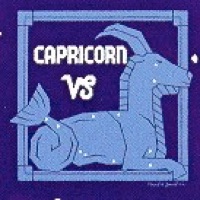The Sidereal Zodiac and its Star Constellations
Aquarius the Waterbearer

One of the most ancient of constellations identified in many cultures, it has an old association with water. In the Euphrates, they called it the Sea. Sometimes only an urn pouring water is imaged. Long ago, it was associated with the rainy season of the year but the Babylonians associated it with the Deluge. It was known as Gu, a water-jar overflowing. Still earlier the Akkadians called it Imma, Lord of Canals. The Egyptians imagined that the setting Aquarius caused the rising of the Nile, as he sank his huge urn in the river to fill it. In very early China it constituted the Turtle or Tien Yuen and later was known a Hiuen Ying, the Dark Warrior or Darkly Flourishing One. It was a symbol of the emperor Tchoun Hin, in whose reign was a great deluge. After the Jesuits in the 16th century invaded China, it became Paou Ping, the Precious Vase. It is associated with John the Baptist and sometimes to Moses when he was taken out of the Nile River.
Fomalhaut has long been the common name for this Royal Star of the Persians. It was one of the four major measuring stars of the sky. This star is now associated with Pisces but the ancients assigned it to Aquarius. As late as 1627 A.D., Kepler put it with Aquarius. In 3000 B.C. it is was near the winter solstice and one of the four Guardians of Heaven. By 500 B.C., it was worshiped in the temple of Demeter and associated with eminence, fortune and power. The Chinese knew it as Pi Lo Sze Mun.
Pisces the Fishes

In the early days, the two fishes were show together, one above the other, but in reversed directions, although united as now. It has been called Leader of the Celestial Host since it rises with the Sun on the first day of spring during the Age of Pisces. Some think the dual form of this constellation recalls the additional month every six years that the Babylonians used in their 360 day calendar. They called it Numi, the Fishes or Zib which could also mean ‘Boundary” as being at the end of the zodiac. In early Chinese it was part of the Dark Warrior and was a Pig, Tseu Tsze. Later the Chinese named it Shwang Yu, the Two Fishes. The Arabians call it Al Samakatain. The Syrians revered the idea that fish were divine, so they abstained from eating fish. The Jews consider it their national constellation and it has long been associated with Jesus, the fisherman. Legend has it that the Star of David appeared in the Pisces constellation to herald a new age and messiah. The Greeks sometimes call it Adir and Dag (Great and Fish) where a woman’s head was drawn upon a huge fish body. The current Southern Fish is seen drinking in the stream pouring out of Aquarius’s water urn where Fomalhaut is presently drawn but was formerly part of Aquarius’s water stream.
Aries the Ram
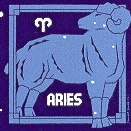
Aries may have been first created by the Babylonians when its stars began to mark the spring equinox during the Age of Aries (aprox.2320-160 B.C.) and the advent of the warrior races dominated the agrarian cultures. Many think that Aries was designed to represent the Egyptian Gods shown at Thebes with ram’s horns such as Amon, Ammon or Amun, or Arnum (Lord of the Head). The Egyptians called the star group the Fleece and the Arabs called it Al Hamal, the Sheep. In China it was the Dog or Kiang Leu but in the 15th century Chaucer associated it with Abraham’s Ram caught in the thicket. Some considered it the Lamb sacrificed on Calvary for humanity. Aries is traditionally figured with its head looking back admiring its own golden fleece or running west with the zodiac belt around his body. Aries was the lunar house of Mars. About eight Grecian temples were oriented to the star Hamel (2400 to 250 B.C.) favoring Zeus and his daughter Athene. Hamel lies just north of the ecliptic and is much used in navigation with lunar observations.
Taurus the Bull
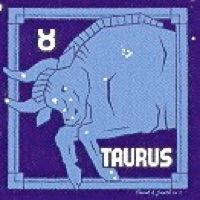
This constellation was one of the earliest constellations in astrology around the world because it measured the starting point in the sky during the Age of Taurus from 4550-2400 B.C. when it rose with the Spring Equinox. The first Greek letter alpha is modeled after the shape of the stars in the Bull’s head along with the Hebrew A or Aleph. During this period of time, the Bull was worshiped near and far with the disk of the Moon between its horns during this agrarian era. The Egyptian worshiped Apis which became Hapi later. The Chinese had Taurus as part of the White Tiger, which later became the Golden Ox and it was the Mithraic Bull.
The Bull’s left eye is Aldebaran, one of the brightest stars that measure the sky since it is exactly 180 degrees from Antares in Scorpio. The Persian considered Aldebaran to be one of the four Royal Stars or Guardians of the Sky. It was considered to be very fortunate portending riches and honor. Babylonians considered Aldebaran the Leader of the Signs or Furrow of Heaven.
Gemini the Twins
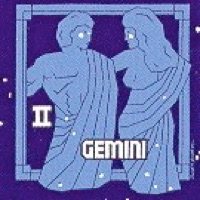
From the days of remote antiquity, various cultures have considered Gemini to be the Twins. In Babylon Castor marked the 11th ecliptic constellation call Mash-mashu-Mahru while with Pollux they became Mas-tab-ba-gal-gal, the Great Twins. In India there were the Ashwins or Mithuna, the Boy and Girl, later to be called Jituma. The Jews assigned the tribes of Simeon and Levi to it. The Arabs call them Al Tauaman. Some considered Gemini to be in the center of the sky since the Milky Way passes through them. The Persians called the Twins Du Paikar, the Two Figures. Christians assigned them to St. James and Adam and Eve. Arabians drew them as Peacocks and some Chaldeans showed them as Two Gazelles. The ancients Egyptians showed Two Sprouting Plants but later as male and female twins. Another symbol was a Pile of Bricks referring to the building of the first city by the bothers Romulus and Remus. The Sumerians also signified bricks. The early Chinese called them the Ape known as Shih Chin. Later they were named Yin Yang, the Two Principles. Castor and Pollux are the main stars in Gemini. Castor, the western one has the old portent of mischief and violence while Pollux is the eastern one.
Cancer the Crab

This is the most inconspicuous figure in the zodiac constellations. It is said that Hercules was pinched on his toes by the Crab and stepped on it. Juno exalted it to the sky. It was the supposed Gate of Men through which souls descended from heaven into human bodies. It’s been called the House of the Moon from the early belief that this luminary was located here at the creation. It was also called the Northern Gate of the Sun since the Sun is at its highest point in the sky in Cancer, marking the season of summer and the Tropic of Cancer. It was called Karka in Sanskrit and Kalakang by the Persians. The Arabs called it Al Saratan, all of them meaning The Crab. The Egyptians showed it as a scarab beetle and called it Scarabaeus (emblem of immortality) while the Babylonians made it into the Tortoise. The ancient Chinese called it Kut, the Cloud-like and later the Kau Hea, the Crab. Halley’s comet first appeared here in 1531.
Leo the Lion

Regulus is the dominant star in this constellation and one of the four Great Royal Stars of the Persians. They believed that it ruled the affairs of the heavens when Leo rose with the summer solstice Sun in 5000 B.C. As one the Four Guardians of Heaven, it marked the cardinal points.
Virgo the Virgin
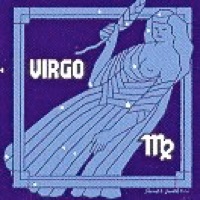
The Virgin is figured with the palm branch in her right hand and the spica, or ear of wheat, in her left. It is claimed that when the sun was in Virgo, she was a sunburnt damsel, with an ear of corn in her hand, like a gleaner in the fields. It is said that the wheat seeds dropping from the sheaths became the stars of the Milky Way. The Sumerians assigned this constellation their sixth month as the Message of Istar. In India she was Kanya and in Persia she was Khosha. Currently India uses Spica to measure the sidereal zodiac for Jyotish astrology. The Chinese called her She Sang Neu, the Frigid Maiden but in earlier times it was Shun Wei, the Serpent as part of the Red Bird. It was also known as Ki for the lunar station that Spica marked. The Arabs only drew a sheaf of wheat and call it Al Sunbulah. Many ancient temples in Egypt and Greece were oriented to its major star, Spica, which is the sheaf of wheat. It was in ancient times a source of eminence, renown and riches. The Chinese called Spica, Kio, the Horn or Spike. The Hindus knew Spica as Citra and figured it as a Lamp or Pearl. It was knows as their 12th lunar mansion. Washington D.C. was designed with Spica in mind and there are images of the Virgo the Virgin in its architecture.
Libra the Scales

Egypt showed the constellations as a Scale-beam, a symbol of the Nilometer. The Greeks called it a Weigh-beam; while the Latins called is Jugum, the Yoke, or Beam of the Balance. In India it was Tula, a Balance versus the Persians showed a human figure lifting the Scales in one hand and grasping a lamb in the other. Arabians called it Al Kiffatan, the Trays of the Balance. In China it was Show Sing, the Star of Longevity but later it became Tien Ching, the Celestial Balance that is part of the Dragon. This all evolved into Libra becoming the Goddess of Justice in the name of Balance in the affairs of men by the 1700’s. Its earliest representation was by the Chaldeans as extended claws of Scorpio or a double constellation of Scorpions.
Scorpio the Scorpion
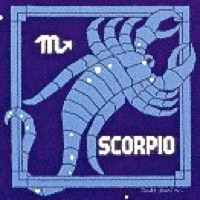
This constellation was the slayer of Orion since it rises as Orion sets in the sky. It is one of the oldest constellations recorded around the world, as far back as 5000 B.C. In early China it was part of the Azure Dragon, the Hare and in the 16th century it became the Celestial Scorpio. Biblical Abraham was associated with the Eagle representation of Scorpio. It was also known as the Crowned Snake by some. The Akkadian called it Girtab, the Seizer or Stinger. Alchemists held it in high regard, for only when the sun was in this sign could the transmutation of iron into gold be performed. Historically, bright temporary star novas have been recorded in this constellation which may be the foundation for why the ancients maligned its meaning.
Antares is one of the bright measuring stars of the sky and is considered the Heart of the Scorpion. It is exactly 180 degrees from Aldebaran in Taurus. The Persians considered Antares one the four Royal Stars and Guardian of the Heavens. The Chinese called it Who Sing, the Fire Star. The Egyptians associated it with the goddess Selkit, heralding the sunrise at the autumnal equinox about 3700-3500 B.C. Some of the early Grecian temples were oriented toward the rising or setting of Antares at the vernal equinox.
Sagittarius the Archer
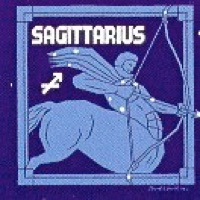
In Egypt it was known as the arrow in a human hand or sometimes as an Ibis or Swan. In Coptic Egypt, it was seen as a dual headed archer-horse with a lion and man for a two-sided face. The Persian Kaman and Arabic Al Kaus both meant the Bow and Arrow, which points to the heart of Scorpio. It has great antiquity in the Euphrates among the Babylonians and Sumerians. They called it the Strong One personifying the archer god of war, Nergal. They sometimes called it Kakkab Kastu, Star of the Bow. India claimed Sagittarius 3000 years age as a Horseman call Acvini. Ancient China called it Seih Nuh, the Cleft Tree. Parts of it were the Nan Tow, a Ladle, Measure or Milk Dipper of special worship in China. Later it became Jin Ma the Man-Horse that is part of the Chinese Tiger. It is associated with fruitfulness and is considered fortunate.






